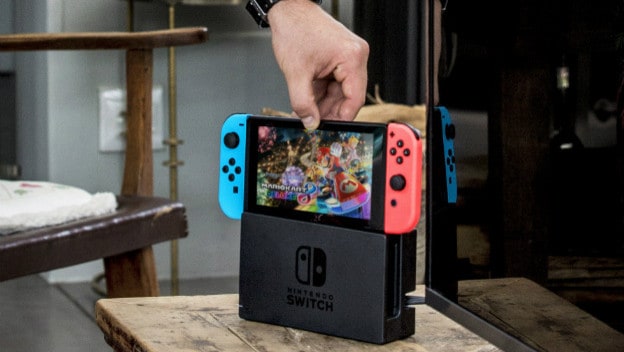Nintendo is having a pretty grand 2017. The Switch was not only a surprise success for many people, but so much so that Nintendo’s stocks are crazy high. Not only that, but many retailers such as Best Buy and GameStop are reporting huge numbers because of the ongoing hype for the Switch. The steady software rollout for the platform is also doing quite well, with a solid variety of games lined up that play well to the strength of the console. But I have to ask – what’s next?
After E3, and later 2017, come to an end, we don’t really have a clear picture of what to expect. We know a Fire Emblem game is coming, and that’s about it. Nintendo has pretty smartly been focused on this year so far, for good reason. The Wii U’s software drought was legendary. Taking things one step at a time, and spacing first-party software accordingly, has kept peoples’ energy and satisfaction high. Stock issues aside, of course.
To keep Switch going strong, I can think of a few key points that, from my personal perspective, should allow this momentum to continue rolling. If Nintendo is able, and can get the support it needs, the early success should keep on rolling into 2018. For now, I’m going to present three points. First, the 3DS needs to be phased out. Second, the Switch needs to continue being a source for boutique, collector-friendly releases. Finally, Nintendo needs to maintain its partnerships and properly advertise its third-party games.
R.I.P., 3DS
We all love the 3DS, especially Nintendo. After all, the company continues to support the platform well into 2017, even going so far as to introduce a new SKU in the 2DS XL. For now, it’s a smart move. While the Switch still trickles into homes as stock comes in, the steady install base of the 3DS can still be relied upon for fun, niche games like Miitopia and Ever Oasis . It’s guaranteed cashflow.
However, going into perhaps the latter half of 2018, the 3DS has to go. Sure, games like Fire Emblem Warriors will be multiplatform, but that’s all that should be on the table. The whole point of the Switch is its hybrid nature, allowing Nintendo to stop splitting its own resources between platforms. That was part of the problem with the Wii U. Nintendo could only make so many games for each platform. So, the one that made more money got more attention.
$40 for Street Fighter II ? Sure, why not?
One of the coolest things about the Switch is its odd lineup of software. There’s a new Super Bomberman and a new iteration of Street Fighter II . Physical releases from indie developers/publishers such as Nicalis appear. This is stuff that one would think is unheard of in 2017. But because of Nintendo’s push for indie support and unique software, small developers are getting new opportunities to showcase their games in new ways. And niche fanbases, in the case of the larger properties I mentioned earlier, are able to line their shelves with cool stuff that normally would have been less-celebrated digital-only releases elsewhere.
We can’t underestimate the power of the enthusiast. Casual gamers are great and all, but they don’t spend money. Take a look at the Sony fanbase. Those people are invested in Sony as a brand, practically as a lifestyle. They buy Sony merchandise, and shell out for ludicrous limited editions of each marquee title. Nintendo has that brand power, and should be utilizing it more.

Nindies are cool; don’t mess it up!
The thing that really started to put the Switch over in peoples’ eyes, despite the uncomfortable vagueness leading up to launch, was the Nindies Showcase video. It wasn’t a Nintendo Direct, it was something distinct. Nintendo, in a sort of dartboard effort to get eyes on the product, treated the indie software at launch like royalty. Tons of exclusivity deals were made, and games were advertised like hey haven’t been before. This needs to continue.
Nintendo has a rough history with advertising smaller games. Some multiplatform indie games were practically treated like they didn’t exist, especially if they launched on Wii U after launching on other platforms first. Nintendo needs to roll out the red carpet for as many new games as possible, regardless of their status on competitor hardware. With the Switch, every game is playable on a unique, attractive piece of new hardware. It doesn’t matter if It came out elsewhere. You can play it on the Switch, man, and that’s special. Or at least, that’s how Nintendo needs to frame the narrative.
